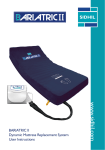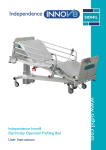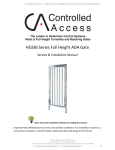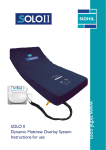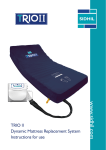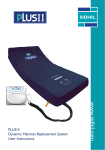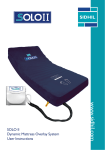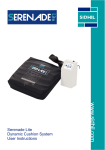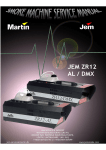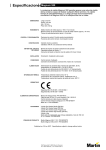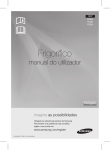Download Freedom II Profiling Bed User Guide
Transcript
Freedom II 4 Section Profiling Bed Instructions for use www.sidhil.com Freedom II Electrically Operated Profiling Bed Welcome to Sidhil Still making it better... At Sidhil, everything we do is designed around quality. From our modern and efficient manufacturing plant in Halifax, West Yorkshire, we manufacture a range of products for the healthcare market using leading edge production technology and finishing processes. We are the only remaining volume manufacturer of hospital beds in the UK, bringing together innovation in product development, sales, customer service and logistics to provide clear benefits for our customers in terms of flexibility, short production timescales and support for our nationwide network of service and maintenance centres. Excellence in customer service is our key objective. Alongside our focus on innovation, research and product development, we use our UK manufacturing facility to ensure optimum levels of product and spares availability, with unparalleled levels of reliability and performance. Corporate social responsibility is also an issue for Sidhil. We have now received accreditation to ISO 14001, underlining our commitment to maintaining the highest levels of environmental awareness and sustainability across our manufacturing operation. 3 CONTENTS 1. INTRODUCTION .............................................................................. 5 1.1 Features .............................................................................................. 5 1.2 Warnings and Cautions ........................................................................ 5 2. USE..................................................................................................... 6 2.1 Typical Use .......................................................................................... 6 2.2 Risk Assessment ................................................................................. .6 2.3 Bed Load ............................................................................................. 6 2.4 General Warning ................................................................................. 6 3. SYMBOL DEFINITION ...................................................................... 7 4. PARTS IDENTIFICATION ................................................................. 8 5. BED ASSEMBLY AND PREPARING FOR USE ................................... 9 5.1 Removal From the Transport Stand ...................................................... 9 5.2 Assembling the Bed ..............................................................................10 5.3 Fitting the Electrical System ..................................................................11 5.4 Fitting the Side Rails .............................................................................12 5.5 Checking the Bed ................................................................................ 14 6. OPERATION OF THE BED ................................................................ 15 6.1 General Safety ..................................................................................... 15 6.2 Preparing For Use................................................................................ 15 6.3 Brake System ...................................................................................... 16 6.4 Side Rails ............................................................................................. 16 6.4.1 Mattress Thickness................................................................ 16 6.4.2 Operating the Side Rails.............................................................. 17 6.5 Electrical Operation ............................................................................ 18 6.5.1 Handset Functions .................................................................18 6.5.2 Lockout Functions .................................................................18 6.6 Knee Break / Leg Section ..................................................................... 19 7. ASSEMBLY ONTO THE TRANSPORT STAND ................................. 20 8. POWER FAILURES ............................................................................. 22 9. DECONTAMINATION ....................................................................... 23 9.1 Cleaning and Disinfection Guidelines .................................................... 23 9.2 Steam cleaning ..................................................................................... 24 10. MAINTENANCE .............................................................................. 25 10.1 Fault Finding ....................................................................................... 26 10.2 General Maintenance ......................................................................... 27 11. SPECIFICATION .............................................................................. 28 11.1 Bed Data ............................................................................................ 28 11.2 Electrical Data .................................................................................... 29 12. WARRANTY ..................................................................................... 30 4 1. INTRODUCTION Thank you for purchasing this product. These instructions for use should be read carefully before operating the bed. Please ensure that you understand all instructions, if you have any questions concerning the operation or maintenance of the bed please contact your provider / supplier who will provide you with expert professional advice. 1.1 Features • Electrically operated backrest, height and knee break angle • Infinitely variable electrically operated foot down tilt (Trendelenburg & reverse Trendelenburg) • Auto contour – simultaneous adjustment of the backrest and knee break • Patient handset with integral function lockout • Bed breaks down into four separate sections • Integral full length side rails • Transport stand to aid storage and bed transportation 1.2 Warnings and Cautions Warnings in these instructions for use highlight potential hazards that if disregarded could lead to injury or death. Warning Cautions in these instructions for use highlight potential hazards that if disregarded could lead to equipment damage or failure. 5 2. USE 2.1 Typical Use Your bed is intended for use within the home environment. It has been designed to provide users with optimum independence and freedom of movement through the use of a touch button handset. The bed offers greatly reduced manual handling requirements for the carer by providing a bed with a fully profiling platform and electrical height adjustment capability. 2.2 Risk Assessment Before a patient uses the bed a risk assessment must be performed on a patient by patient basis. The risk assessment should include but is not limited to: • Entrapment • Falling out of the bed • Small children (and adults) • Patients with learning difficulties • Unauthorised people Bed functions must be locked out if there is any doubt about the ability of the patient to operate the bed safely. Warning 2.3 Bed Load 213kgs (33 stone) 178kgs (28 stone) The safe working load of the bed is: The maximum user weight of the bed is: 2.4 General Warning • Misused electrical equipment can be hazardous. • Accessories that have not been approved or designed for use with the bed should not be used. Warning • Electrically operated beds should not be used in the presence of flammable gasses. 6 3. SYMBOL DEFINITION The following symbols are found on this bed: Warning Beware of potential hazard Refer to instructions for use - Recommended Failure to read the instructions for use could introduce a hazard Maximum patient weight & Safe working load Place of manufacture W.E.E.E Label - Found on individual parts of electrical system (Waste Electrical and Electrical Equipment) Class II, Type B Refer to instructions for use for mattress suitability Use of an incorrectly specified mattress could introduce a hazard 7 4. PARTS IDENTIFICATION 1. Head/foot end 2. Castor 3. Handset 4. Lockout fob 5. Control box & knee break actuator 6. Leg section 7. Locking collar 8. Hi/low actuator 9. Side rail 10. Backrest actuator 11. Backrest (Transport stand not shown) 8 5. BED ASSEMBLY AND PREPARING FOR USE • Before attempting to assemble the bed ensure these instructions have been read and fully understood. • It is advisable to assemble the bed with a second able bodied person. Warning • Take care when disassembling the bed from the transport stand, the sections are of considerable weight. 5.1 Removal From the Transport Stand No tools are necessary for the assembly of the bed. The assembly procedure is as follows: • Clear the area intended for the bed of any obstructions and ensure the surface is level. • Apply the brakes to the castors. • Loosen the hand wheels on the transport stand that hold the leg section in place and then lift this section off the stand and carefully place flat on the floor. • Loosen the hand wheels on the backrest section (attaching it to the transport stand) and then lift this section off the stand and carefully place flat on the floor. • Turn the locking collars on one of the bed ends so that they are both in the unlocked position. • Carefully lift the ends of the transport stand away from the bed end and place carefully against a wall or on the floor. Note: when the transport stands are lifted away neither bed end will be supported. • Turn the locking collars on the remaining bed end so that they are in the unlocked position. • Carefully lift the ends of the transport stand away from this bed end. The bed has now been separated into its constituent parts. 9 Collar unlocked 5.2 Assembling the Bed • Whilst supporting one of the bed ends lift one of the mattress platform halves and hook into the bed end. Turn the locking collars into their locked position. Note: If this action is being undertaken by a single person Sidhil recommend that the castors are braked before assembly commences. • Repeat for the remaining bed end and mattress platform halve. Collar locked • Release the brakes on the castors. • Bring both halves of the bed together and align each section so that the spigots in the head end locate into the open tube ends in the foot end. Pull the two sections together and tighten the 2 hand wheels. Spigot • The bed must never be used with the hand wheels loose or if missing. Warning • The bed must never be used with the locking collars in the unlocked position or if missing. If the bed has been supplied with tie wraps/Velcro (or similar) securing any of the sections in place ensure they are removed prior to operation. Caution 10 5.3 Fitting the Electrical System • Plug the actuator and handset cables into the control box. The cables are colour matched to the graphic on the control box so using this, plug the cables into the corresponding ports. Note, the plugs only fit into the ports in one orientation. Ensure the cables are plugged fully into the control box. Note: The two bed ends are identical but plugging them into the correct port is important. Note the cable tie colour before plugging in. • Once all the cables are connected they are to be secured in place by attaching the supplied anti-removal clip. • Clip the mains cable into the hook on the head end section of the bed. Mains Cable Clip Hi/Low - Head End Hi/Low - Foot End Backrest Knee Break Handset • Ensure all cables are free from moving parts and are not under excessive tension. Caution • Ensure the two hi/low actuators are plugged into the correct ports, if not the tilt function will not work correctly. 11 5.4 Fitting the Side Rails • Raise the bed to approximately the midpoint of its height range (see page 18 for operation of the handset). • Lower the finger assemblies to their ‘down’ position. (see page 17 for an explanation of how to lower the fingers). • Remove the hand-wheel from the side rail channel at the foot end of the bed. • Remove the entire finger assembly set from the channel (as per top right image). • Taking the first side rail slide the end of it into the top set of fingers that are still located in the channel at the head end of the bed. Carefully rest the unattached end on the floor taking care to ensure that the other end is sufficiently far into the fingers so that it will not fall out. • Take the previously removed assembly and clip the wire into the top moulding (the top moulding is identified by the metal release catch in the middle). Ensure the open end of the wire loop is pointing towards the end of the moulding with the half moon in it. • Slide the fingers into the side rail. • Whilst holding the fingers in the side rail, with the other hand slide the plastic slider stop into the channel. Slide the plastic finger assembly into the channel (after the slider stop). Lift the assembly until a click is heard and the mechanism locks into place, approximately one third up the channel. Let go of the side rail. 12 • Take the second side rail and fit this into the remaining lower set of fingers that are still located in the channel at the head end of the bed. Carefully rest the unattached end on the floor taking care to ensure that the other end is sufficiently far into the fingers so that it will not fall out. • Take the remaining finger assembly and position the top finger through the wire loop, so that the bottom finger is hanging freely under the loop. (Note, if there is no wire loop visible push it down the channel using the slider stop). • Lift the remaining side rail and slide the fingers into the open end, ensuring that one finger remains within the wire loop. • Whilst holding the fingers in the side rail, with the other hand slide the plastic spacer block into the channel. • Slide the finger assembly partially into the channel. Clip the open end of the wire loop into the groove that is positioned just above the lower finger. Once clipped into place lift the complete side rail assembly to the top of the channel. • Re-fit the previously removed hand-wheel. (The hand-wheel is orientated so that when fitted the threaded section is pointing towards the middle of the bed.) • Repeat the assembly process for the side rail on the other side of the bed. If there is any doubt about the assembly of the side rails contact the provider of the equipment, incorrectly fitted side rails can lead to death. Warning 13 5.5 Checking the Bed The bed is now fully assembled. Before the bed is put into use ensure the bed is correctly assembled: • Are the locking collars on the corners of the bed correctly orientated in the locked position? • Are the 2 mattress platforms and 4 side rail channel hand wheels tight? • Has all packaging been removed e.g. cable ties/Velcro securing the platform sections? • Are the cables free of all moving parts of the bed and is there sufficient slack in the cables to allow for movement? • Is the bed clear of obstructions? • Has a risk assessment been performed on the suitability of the bed for the user? 14 6. OPERATION OF THE BED 6.1 General Safety • When the bed is operated, ensure that obstacles such as over bed tables and other furniture are not causing an obstruction. • Ensure the electrical cables are not in tension. • Ensure that any mattresses used are of the correct size and type and have been fitted correctly. A range of suitable pressure relieving and pressure reducing mattresses are available from Sidhil Ltd. • Before operating the bed ensure the patient is positioned appropriately. • When a patient is left unattended ensure the bed is set at its minimum height. Special care should be taken when fitting an air mattress to the bed as incorrect fitting could damage the bed frame. Caution 6.2 Preparing For Use Prior to operating the bed for the first time the following simple checks must be performed: • Ensure the bed and all accessories are at room temperature. • Ensure the bed has been cleaned and disinfected (page 23). • Ensure the mains cable is plugged into an appropriate mains socket. • Ensure the brakes on the castors at the head end of the bed have been applied. • Using the handset ensure the bed is level (see page 18 for handset operation). Note: if the electrical functions do not operate ensure the handset has been ‘unlocked’ (see page 18 for handset operation). 15 6.3 Brake System The bed has 4 braked castors. • To apply the brakes: Press the brake pedal down. • To release the brakes: Lift the brake pedal up. When the bed is in use ensure the brakes on the castors at the head end of the bed have been applied. • If the bed is to be pushed up/down a slope it is advised that two people move the bed, with one person at each end. Warning • If the bed is to be pushed with a heavy load it should be assessed whether or not two people should move the bed, this is dependent on the situation and load on the bed. 6.4 Side Rails The bed comes as standard with full length side rails. A side rail height extension can be ordered as an accessory. When specifying a mattress and side rail combination a clinical assessment of the patient’s needs must be carried out in line with the local policy. 6.4.1 Mattress Thickness • Full length side rails = 158mm maximum mattress thickness. • Warning Full length side rails with height extension = 270mm maximum mattress thickness. • Side rails must only be used with a mattress of the correct size and type that is approved for use with this bed. If an overlay air mattress is used it may be necessary to use a thinner foam mattress for the combined height to maintain the 270mm dimension. Refer to MHRA Device Bulletin DB2006 (06) ‘Safe use of bed rails’. Side rails pose a potential entrapment hazard, please refer to side rail safety notice, SR/PSN 01/01/1, supplied with this product. 16 6.4.2 Operating the Side Rails • Ensure the side rails are locked in place at all times when in the raised position. • A risk assessment should be carried out to consider the age, condition and size of the patient to assess the suitability of side rails. Warning • Side rails are not designed to act as restraints for patients. • Side rails are not designed to be used as a patient lifting aid. • When operating the side rails ensure they are free from obstructions, to prevent injury/entrapment. • Do not use the side rails to move the bed. Caution • When lowering do not drop the side rail. To lower: 1. Lift the side rail vertically upwards. 2. Depress the release catch. 3. Gently lower the side rail (the release catch can be let go of when lowering the side rail). To Raise: 1. Lift the side rail until it is heard to latch into position at the top height. 17 6.5 Electrical Operation The bed is supplied with an easy to use handset, the handset can either be operated by the occupant or carer. If the carer is to operate the bed ensure that the occupant is made aware of the action(s) about to take place. Ensure a risk assessment is undertaken to ensure the suitability of the occupant using the handset. Warning 6.5.1 Handset Functions 6.5.2 Lockout Function The handset is supplied with a lockout function which enables the carer to disable the handset if it is deemed unsuitable for the occupant. To lock/unlock the handset, swipe the fob over the padlock symbol. The handset is likely to be in the locked state when the bed is first installed. 18 The bed is not fitted with a battery backup facility. The bed must always be plugged into the mains supply during normal use. Warning 6.6 Knee Break/Leg Section Note: The operation of the knee break/leg section is dependent on the position of the ratchet as detailed below. The bed is fitted with an adjustable leg section. When the knee break function on the handset is operated the height or angle of the leg section is adjusted, depending on whether or not the leg section ratchet is set. To set the bed so that the leg section is raised: • Press the knee break button on the handset and raise the knee break (height not important). • Lift the foot section a little so that the ratchet engages. • The leg section height adjustment will now be set. To set the bed so that the knee break is raised: • Press the knee break button on the handset and raise the leg section (height not important). • Lift the foot section a little so that the ratchet disengages • Gently lower the foot section down. • The knee break height/angle adjustment will now be set. 19 7. ASSEMBLY ONTO THE TRANSPORT STAND • Before attempting to assemble the bed onto the transport stand ensure these instructions have been read and fully understood. • It is advisable to assemble the bed with a second able bodied person. Warning • Take care when assembling the bed onto the transport stand, the sections are of considerable weight. Electrics • Flatten and lower the bed to its minimum height (see page 18 for operation of the handset). • Unplug the mains cable from the mains socket. • Using a flat bladed screwdriver remove the anti-removal clip from the control box. • Unplug the hi / low and knee break actuator cables from the control box (see page 11). Bed Frame • Release the brakes from the castors. • Loosen the hand wheels in the middle of the bed frame. • Whilst supporting both halves of the bed frame split the bed in half and gently lower onto the floor. • Unlock both locking collars on one end. • Whilst supporting the bed end lift the platform half away and gently position both sections on the floor / against a wall. • Repeat for the remaining half of the bed. • Using the 2 orange Velcro straps that first came with the bed, secure the moving parts of the backrest and leg section to the bed frame halves. Side Rails • Raise/lower the bed to approximately its mid height (see page 18 for operation of the handset). • Remove the hand-wheel from one of the channels. • Lower the side rail to its bottom position (the lower slider will partially protrude from the channel). • Whilst holding the lower side rail unclip the wire from the lower finger assembly and carefully slide out of the channel. 20 • Carefully remove the lower side rail. • Whilst holding the upper side rail press the release catch and carefully slide the upper finger assembly out of the channel. • Carefully remove the upper side rail. • Relocate the finger assemblies into the channel (see page 12 for assembly order). • Refit the hand-wheel into the channel. • Repeat for the other side of the bed. Assembling onto the Transport Stand • Position both transport stand brackets onto one bed end, taking care to ensure the brackets are both orientated in the correct direction. • Turn both locking collars into the locked position. • Hook the remaining bed end onto the transport stands. • Lock the castors. • Carefully lift the backrest section and lower the spigots through the open tubes on the side of the transport stand brackets, ensuring the electrics are facing inwards. • Tighten the hand wheels on the transport stand. • Carefully lift the leg section and lower the open end onto the vertical bars, ensuring the electrics are facing inwards. • Tighten the hand wheels on the leg section frame. • Ensure all cabling is neatly wrapped around the relevant bed sections and is not dragging on the floor or is under excess tension. The bed must never be moved on the transport stand with the locking collars in the unlocked position or missing. Warning 21 8. POWER FAILURES The bed does not have battery backup functionality. In the event of a power failure the bed will not function, resulting in the backrest and/or knee break remaining up, if previously raised. The backrest and knee break are operated via two individual actuators that are located underneath the mattress platform. • If either the backrest or knee break is raised, locate the actuator supporting the relevant section. • Hold / support the section. • Remove the pins that hold the actuator in place. • Gently lower the section(s) to the flattened position. • It is recommended that 2 carers support the section prior to removing the pin. Warning • When the pins are removed there is nothing supporting the section, the carer(s) holding the frame must be ready to support the weight on removal of the pin. 22 9. DECONTAMINATION 9.1 Cleaning and Disinfection Guidelines Infection control and routine cleaning must be carried out in accordance with your local Infection control policy or regulatory body. • Always disconnect the bed from the main power supply prior to cleaning. • Ensure all ports on the electrical system (control box and actuators) have cable plugs inserted to maintain the IP rating. Warning • Regular cleaning and disinfection of the bed frame and relevant accessories will help to prevent the risk of infection to the occupant and / or carer. • Prior to transferring the bed frame / accessory to another user ensure it has been cleaned and disinfected using the method as detailed below to help prevent the risk of cross infection. It is advisable to remove any accessories that are fastened to the bed. These instructions apply to all accessories apart from soft products (e.g. mattresses). • All surfaces to be wiped down with a disposable soft cloth moistened with a mild detergent and diluted in warm water (40°C). • The bed should be cleaned by starting with the cleanest parts of the bed and systematically moving to the dirtiest parts. Extra care should be taken around areas where excess dirt or dust may gather. • The cloth should be changed during the cleaning process if it becomes soiled. • Rinse down with clean water to remove detergent residue. • Wipe surfaces down with 1,000 parts per million chlorine solution (0.1%). • Dry off with a paper towel. • Always ensure the cleaned parts are allowed to dry before putting the mattress back in place. Note: If any of the 3 stages stated above (detergent, rinse down & chlorine solution) are omitted or combined it will reduce the effectiveness of the clean. In cases of blood spills or other bodily fluids it is recommended that a chlorine solution of 10,000 parts per million (1%) is used instead. Ensure fabric surfaces are rinsed with clean water after application. Note: The use of neat bleach or similar surface cleaners is not recommended as damage may be caused to the cleaned surfaces. 23 Alternatively: Sidhil recommend the use of Tristel ‘Fuse’ sachets and Tristel ‘Jet’ gel. Follow the product documentation for concentration guidelines and instructions for use. Tristel Codes: NHS Supply Chain Codes: FUS/SUR/FRA (Fragranced) 1 x 40 sachets FAL649 (Fuse for Surfaces Fragranced) FUS/SUR/UNF (Unfragranced) 1 x 40 sachets FAL650 (Fuse for Surfaces Unfragranced) JET/head 1 x JET Trigger Head FAL688 1 x Jet Trigger Head JET/PACK/FRAG 1 x refill pack fragranced FAL696 1 x refill pack fragranced JET/PACK/UNF 1x refill pack unfragranced FAL697 1 x refill pack unfragranced Sidhil also recommend the use of Chlor-clean tablets. Follow the product documentation instructions for concentration guidelines and instructions for use. Refer to the Sidhil infection control policy, copies are available from Sidhil Ltd. Contact details can be found on the back of this booklet. 9.2 Steam Cleaning The Freedom II bed can be dry steam cleaned. The individual manufacturer’s instructions should be followed when using a steam cleaner and the following precautions observed: • Avoid directing steam directly at electrical components and reduce steam pressure when cleaning near electrical items and connections. • Use soft brushes and wiper cloths as recommended by the steam cleaner manufacturer. • Do not use high pressure hoses on the bed as they could cause damage to the electrical components. • Do not use excessive force or steam pressure on labels. • Ensure the bed is dry and all debris from the cleaning process has been removed prior to reuse. • Ensure all electrical functions operate as normal once the bed has been cleaned and dried. Always disconnect the bed from the main power supply prior to cleaning. Warning 24 10. MAINTENANCE Only authorised service personnel or Sidhil service engineers should carry out repairs or service activities. Failure to do so may result in the manufacturer’s warranty becoming void. The bed must be serviced once yearly, as a minimum. Sidhil also recommends that the carer performs frequent visual and operational inspections. If there are any signs of damage or the bed is not performing as it should withdraw it from service until the bed has been repaired and is fit for use again. Periodically check to ensure that: • The bed operates as per its intended purpose. • All parts are present. • All fixtures and fittings are tight. • The frame is mechanically sound, with no cracking round welds. • No parts show signs of excessive wear. • The bed is cleaned following the guidelines in these instructions for use. Disposal of components must comply with local policy. • Always disconnect the bed from the main power supply prior to performing any maintenance procedures. • No modification of this equipment is allowed. Warning • The bed should be vacated by the patient before any maintenance or inspection takes place. If this is not possible due to the patient’s mobility care should be taken for the service engineer not to make contact with the patient when working on electrical items. • Only Sidhil approved components, specified for the Freedom II bed, should be used - if in doubt contact Sidhil Ltd or your local distributor. • The mains cable is only to be replaced by authorised service personnel or a Sidhil service engineer. 25 10.1 Fault Finding Listed below are a set of electrical faults that may occur within the service life of the bed. If a fault does occur please try the following suggestions, as these may help in diagnosing the fault. Fault Electrical function(s) do not work Electrical function working slowly Possible Cause Remedy Functions locked out on handset Unlock function(s) Mains lead not plugged into the control box or wall Check to see if the ‘power on’ light on the control box is lit and the mains lead is plugged in at both ends Fuse has blown in the mains plug Check to see if the ‘power on’ light on the control box is lit, if not replace fuse Actuator / handset leads not plugged in Check plug connections on the control box and actuators Damage to mains cable, actuator cable or handset cables Turn off at the mains and contact an approved service engineer Heavy load on the bed and the duty cycle has been exceeded Remove load and allow control box to cool before re-operating Heavy load on the bed Remove load 26 10.2 General Maintenance Sidhil recommend that the following maintenance procedure is performed every 12 months. Always disconnect the bed from the main power supply prior to performing any maintenance procedures. Warning • Check that all electrical functions operate correctly on the handset. • Check that all electrical cables are in good condition. • Check that the mains cable and plug are in good condition, if either is damaged it must be replaced as a complete assembly, the plug must never be rewired. • Check that all nuts, bolts and fasteners are tight and that none are missing or incomplete. • Check that all locking collars and hand wheels are present. • Check that both the knee break and leg rest functions work correctly. • Check the castors lock / unlock correctly and that when locked the castors do not swivel or roll. • Check that the frame is mechanically sound with no cracking at welds etc. • Check that the lock on the safety sides automatically engages when raised. Refer to the service manual for part codes and assembly detail. Copies are available from Sidhil Ltd. 27 11. SPECIFICATION 11.1 Bed Data Overall length 2230mm Overall width 980mm Mattress platform height 335mm – 735mm (+/-10mm) Under bed clearance (to underside of frame) 295mm (+/-10mm) Under bed clearance (to underside of actuator) 145mm (+/-10mm) Mattress platform length 2010mm Mattress platform width 870mm Foot down tilt Mattress platform angles (max) 0 - 11° 75° 27° 23° Safe working load Maximum patient weight 213kgs (33 stone) 178kgs (28 stone) Product weight: (Bed on transport stand): 75kgs (Side rails) 14.5kgs Mattress sizes: Length Width Thickness 2000mm - maximum 864mm - recommended (880mm - maximum) See page 16 28 11.2 Electrical Data Voltage in: 100-240V, ~50/60Hz. Current in: Max. 3,15A Duty cycle* 10% 2 mins of continuous use followed by 18 mins not in use. *Electrically operated beds are intended to be operated intermittently rather than continuously. If the bed is operated continuously for up to 2 minutes it must then be left for at least 18 minutes before re-use to allow the electrical system to cool sufficiently. If the bed is continuously used for an extended period of time and it exceeds the duty cycle the control box may become temporarily disabled or irreparably damaged. Safety standards BS EN 60601-1:2006 BS EN 60601-2-52:2010 EMCBS EN 60601-1-2:2002 Electrical shock prevention: Liquid ingress protection IP54 The electrical system is only suitable for use when: Ambient temperature +5° to +40°C Humidity 20% - 90% at 30°C 29 12. WARRANTY Sidhil Ltd guarantees this product is free from defects in material and workmanship under normal use for 1 year (full parts and labour) from the date of purchase from Sidhil Ltd, its subsidiary companies, authorised dealers and international distributors. Proof of purchase must be presented with any claim. Except as provided herein, Sidhil Ltd, product warranty does not cover damage caused by misuse or abuse, accident, the attachment of any unauthorised accessory, alteration to the product, or any other conditions whatsoever that are beyond the control of Sidhil Ltd. Sidhil Ltd, its subsidiary companies, authorised dealers and international distributors shall have no liability or responsibility to customers or any other person or entity with respect to any liability, loss or damage caused directly or indirectly by use or performance of the product or arising out of any breach of this warranty, including but not limited to any damages resulting from inconvenience, loss of time, property, revenue, or profit or any indirect, special, incidental or consequential damages, even if Sidhil Ltd, its subsidiary companies, authorised dealers or international distributors have been advised of the possibility of such damages. In the event of a product defect during the warranty period you should contact your supplier, whether it be Sidhil Ltd, its subsidiary companies, authorised dealers or international distributors who will at their option unless otherwise provided by law; a) correct the defect by product repair without charge for parts and labour b) replace the product with one of the same or similar design or c) refund the purchase price. All replaced parts and products on which a refund is made become the property of Sidhil Ltd. New or reconditioned parts and products may be used in the performance of the warranty service. Repaired or replaced parts and products are warranted for the remainder of the original warranty period. You will be charged for repair or replacement of the product made after the expiration of the warranty period. This warranty does not cover; a) damage or failure by or attributes to acts of God, abuse, accident, misuse, improper or abnormal usage, failure to follow instructions, improper installation or maintenance, alterations, lightning or other incidence of excess voltage or current, b) any repairs other than those provided by a Sidhil Ltd authorised technician, c) consumables such as fuses, d) cosmetic damage, e) transportation, shipping or insurance costs or f) costs of product removal, installation setup service adjustment or re-installation. This limited 1 year warranty gives you specific legal rights and you may also have other rights. Sidhil Ltd cannot be held responsible for any injury or incident which relates to the use of this bed in conjunction with accessories manufactured by companies other than Sidhil Ltd. All products carry the CE mark in accordance with EC Directive on Medical Devices (93/42/EEC). Sidhil has a policy of continual product improvement and reserves the right to amend specifications covered in this document. No part of this document may be reproduced without the written approval of Sidhil Ltd. 30 NOTES 31 CONTACT INFORMATION Tel: +44 (0) 01422 233000 Fax: +44 (0) 01422 233010 Email: [email protected] www.sidhil.com Sidhil Business Park, Holmfield, Halifax, HX2 9TN A member of the Siddall & Hilton Ltd. Group of Companies (93/42/EEC) Certificate No. FM14550 INSTRUC/BED01, 19/06/2014 - Rev.3


































